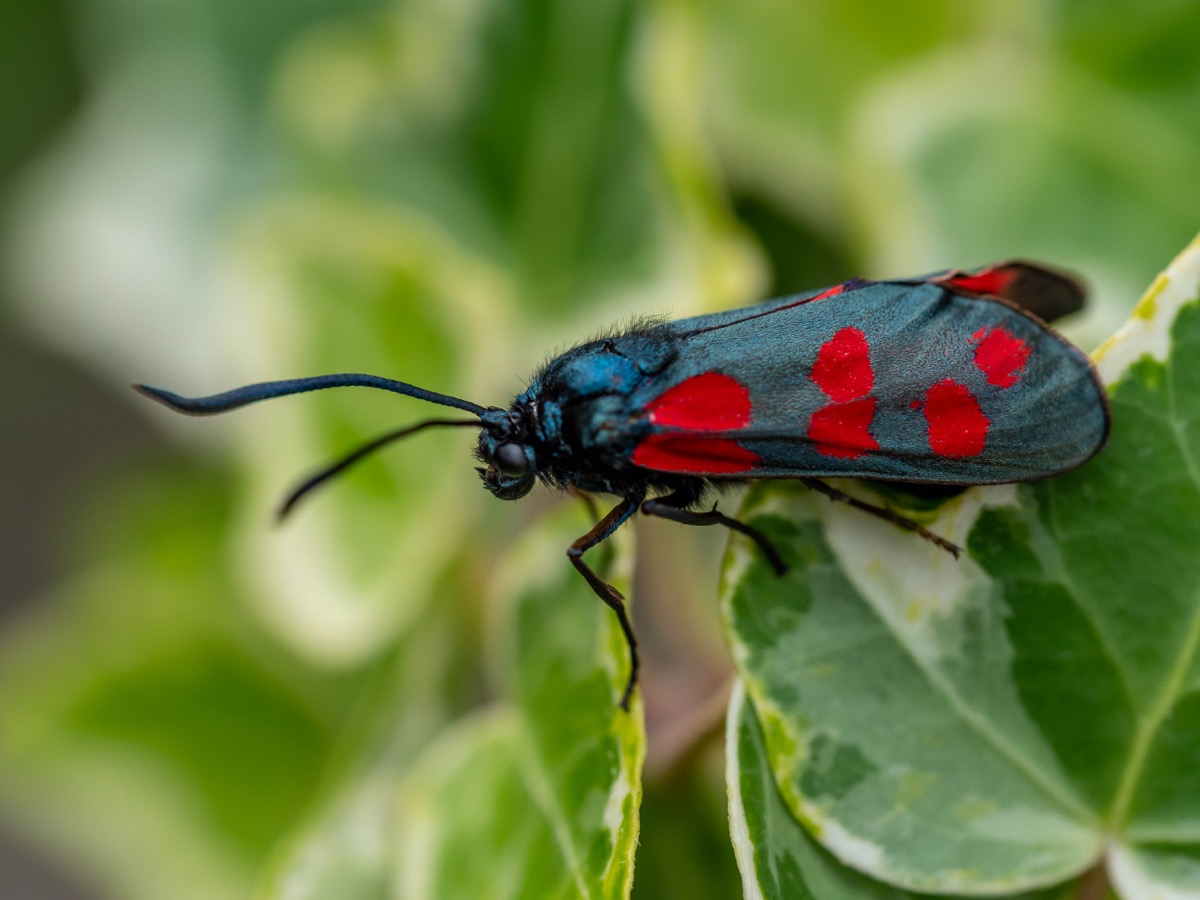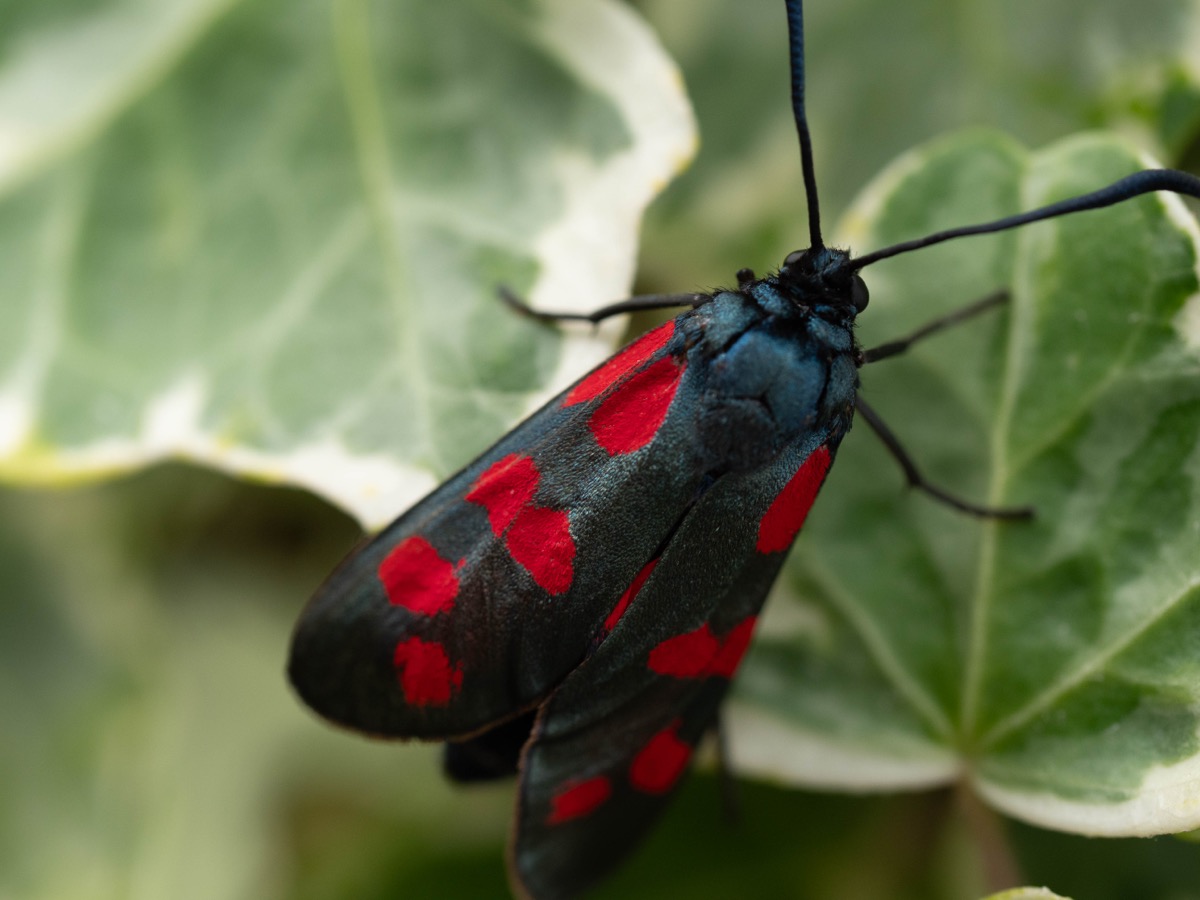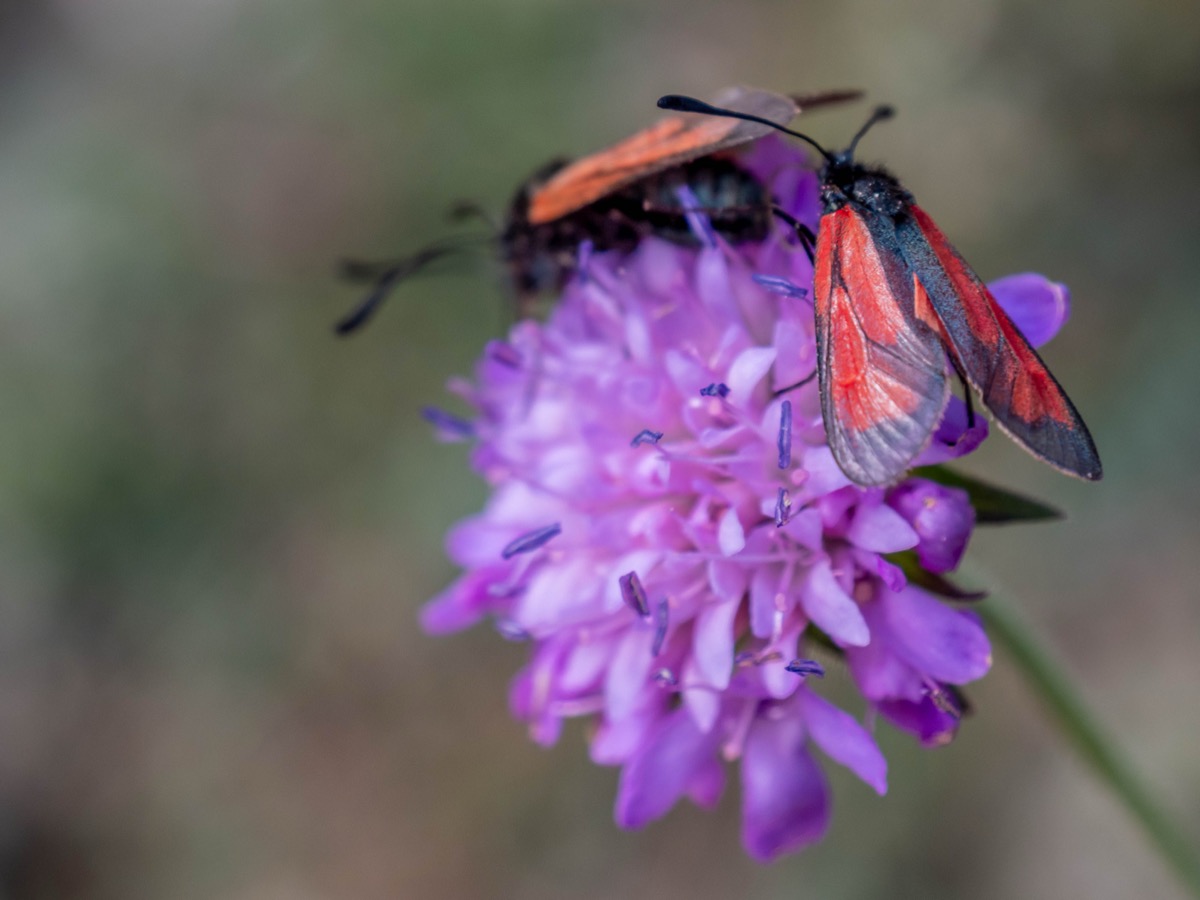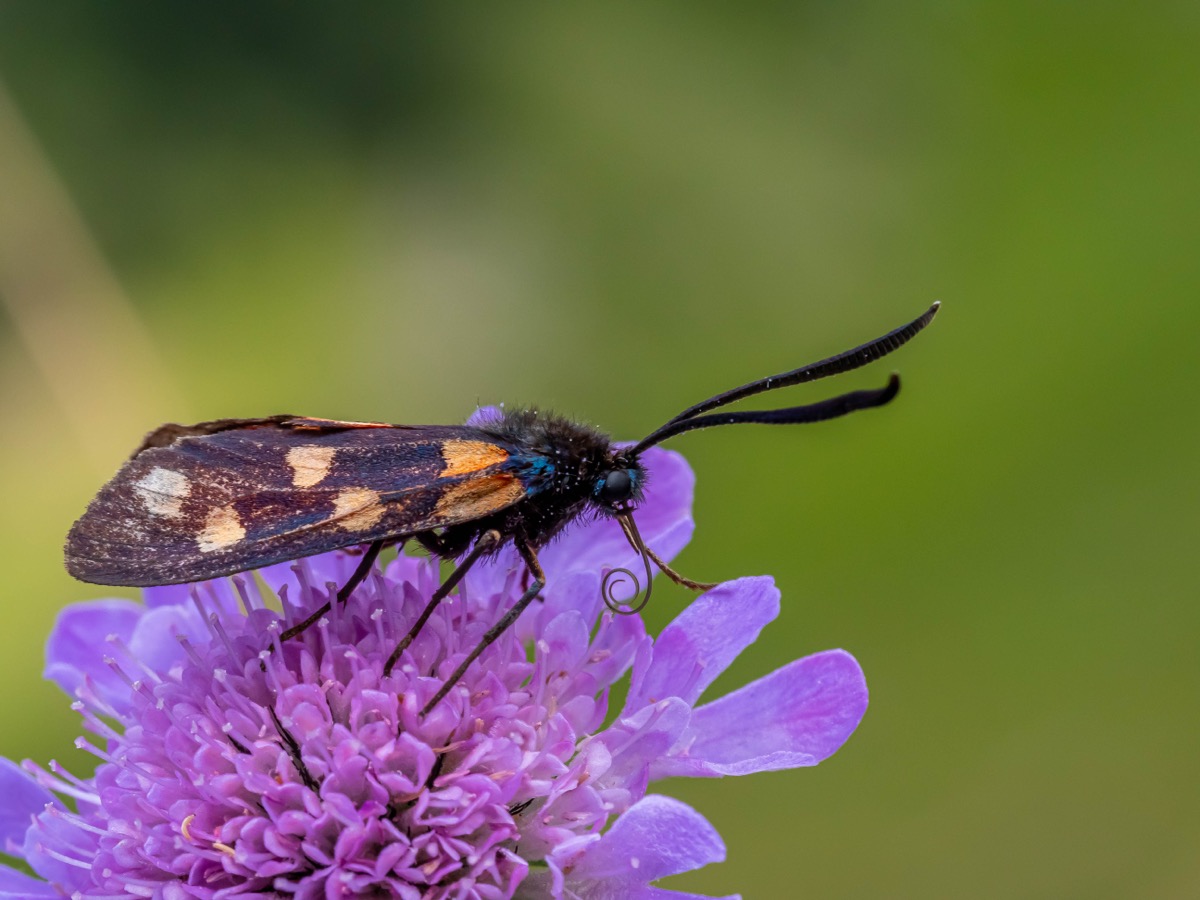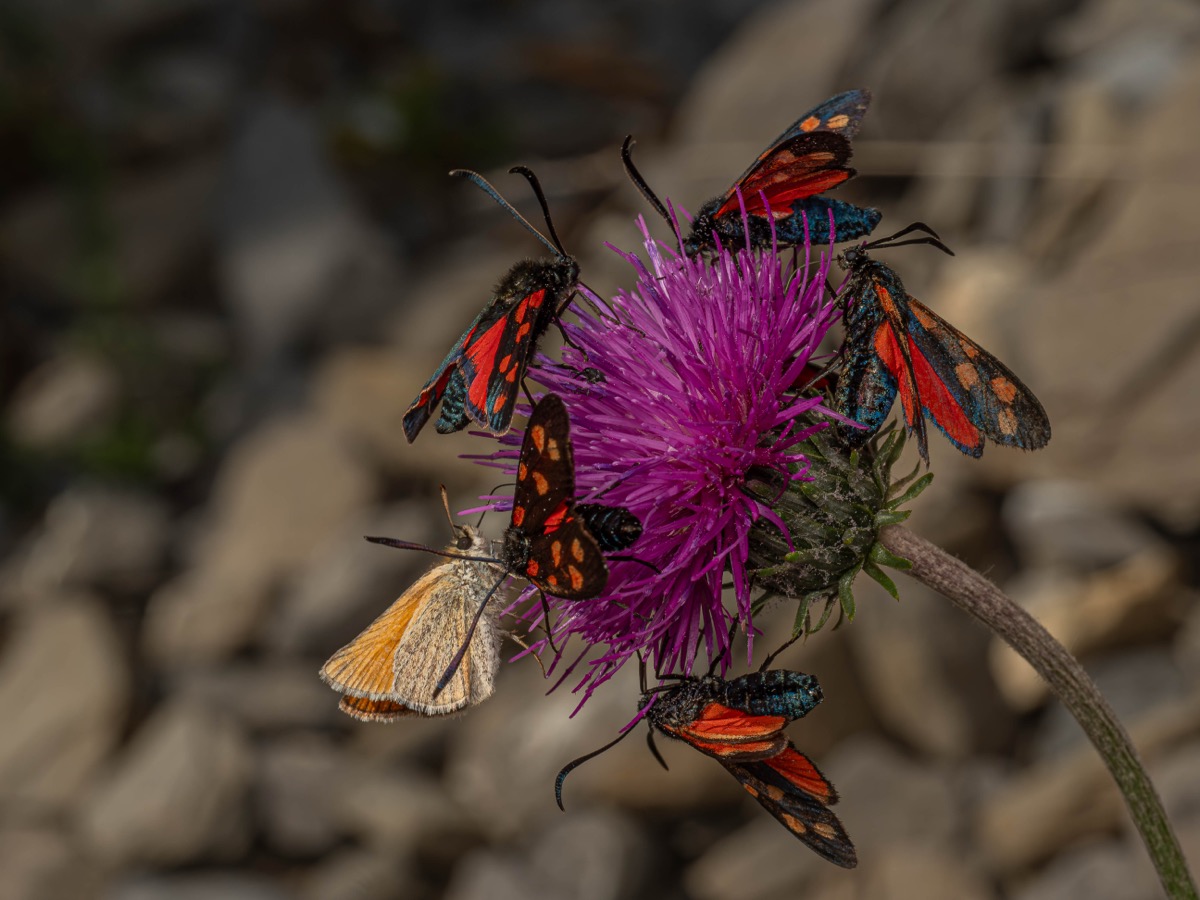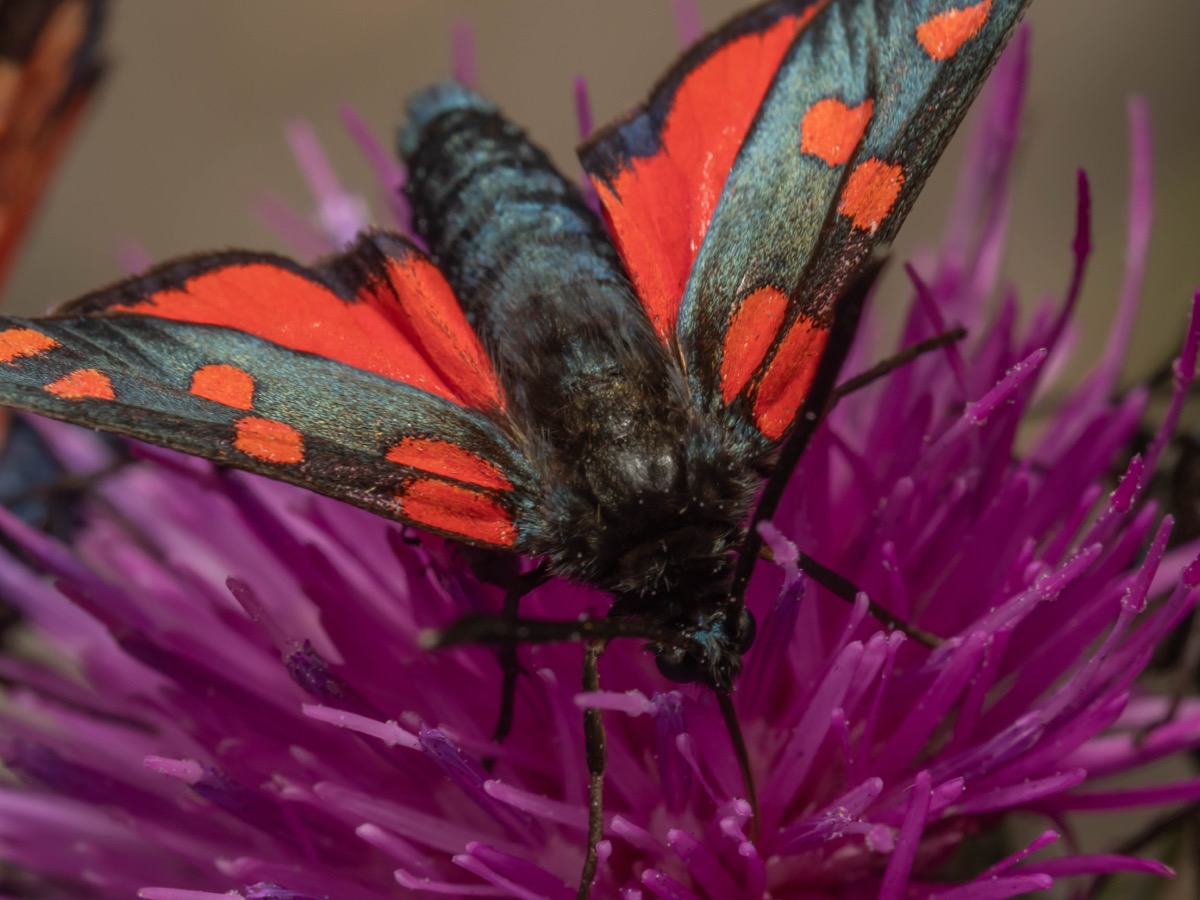ZYGAENIDAE – BURNET MOTHS Zygaenidae – the Burnet moths – are a family of moths also known as “harlequins.” They are often brightly colored with aposematic patterns that signal toxicity to potential predators. The caterpillars of some species feed on toxic plants, thereby accumulating chemical defenses.
Zygaenidae – Burnet moths – are found in various habitats worldwide and are notable for their unique behavior and biology.
- Zygaena filipendulae – Six-spot Burnet
- Zygaena purpuralis – Transparent Burnet
- Zygaena transalpina – Mountain Burnet
Characteristics
- Diurnal moths, slow-flying, sometimes seen in groups
- Narrow, elongated wings, often bluish-black or metallic green with red spots
- Thick, slightly clubbed antennae
- Active in warm, sunny weather
- Small head, stout body
Habitat
Zygaenidae inhabit:
- Natural meadows, calcareous grasslands, flower-rich fallows and heaths
- Sun-exposed slopes, areas rich in Fabaceae (clover, vetch…)
- Unmown open habitats, rich in nectar-producing plants
Biology
- Eggs laid in groups on or under host plant leaves
- Stout caterpillars, often pale green with black dots, sometimes hairy
- Presence of cyanogenic toxins in both caterpillar and adult
- Pupation in a white silk cocoon attached to a stem
- One generation per year (univoltine); adults seen in summer
Common European species
- Zygaena filipendulae – Six red spots, very common in meadows
- Zygaena lonicerae, Z. trifolii – Similar to Z. filipendulae, distinguishable by genitalia
- Zygaena carniolica – Red spots rimmed with white, more localized
- Zygaena minos, Z. transalpina – Found in mountain or southern regions
Special features
- True aposematism (toxicity) and Müllerian mimicry
- Some species coexist sympatrically, making identification challenging
- Highly sensitive bioindicators of early mowing, eutrophication, or Fabaceae decline
- Long larval lifespan, sometimes with caterpillar overwintering
